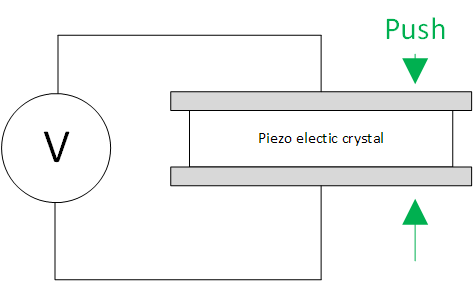What a Piezo Converter is?
Scientists around the world are struggling with the problem of prolonging the life of energy sources. Everyone knows that two differently charged objects are attracted, but usually the force of this attraction is small and unreliable. Scientists experiment and found out: special polymer plates, charged in a certain way, are attracted to each other with a force of several pounds! Despite the fact that they are charged with a charge of only one microcoulomb.

Let us explain: the piezoelectric effect is the property of crystals of certain substances during compression to change the crystal lattice and, as a result, to produce an electric charge of very high voltage. For the first time this property was discovered in quartz crystals in 1880 by the French physicists Jacques and Paul Curie. Today, more than one and a half thousand substances with such properties are known, of which Rochelle salt and barium titanate are widely used. The most common device today that uses the piezoelectric effect is a convenient lighter.
The spark that the piezoelectric element gives must also be "caught and made to work with the microprocessor." Scientists try to build a piezo converter, consisting of a transformer, two diodes and a capacitor. The prototype is here for a few years. The projected lifecycle of piezo converter is ten million cycles. And no click is heard - the crystal shrinks silently.
To date, the piezo converter, remote switches, batteryless sensors are very interested by security services, miners, firefighters, gas workers and oilmen. Because it provides an autonomous wireless alarm, in which due to the tightness there is absolutely no possibility of sparking (this is especially important for miners and firefighters, since the risk of explosion is eliminated). And you never need to change batteries.
Scientists have known about static electricity for a long time. For example, the famous Maria Skłodowska Curie used this phenomenon to study the properties of magnetic materials.
Piezoelectric elements are widely used as sound sources, vibration sensors, polaroid films.

